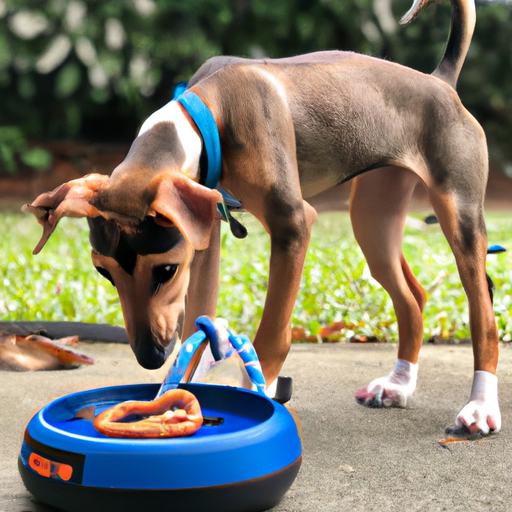1. Understand Your Dog’s Ideal Weight
You’re not alone if you don’t know your dog’s ideal weight. Many dog owners aren’t aware that like humans, dogs too have an ideal weight range based on their breed, age, and size. Overweight dogs can face a multitude of health issues like diabetes, arthritis, heart disease, and even a reduced lifespan. It’s important to talk to your vet about your dog’s ideal weight, and how to achieve it if they’re currently overweight.
2. Nutrition: Key to Healthy Weight Loss
Good nutrition is the cornerstone of weight loss in dogs, just as it is for us humans. You can’t expect your dog to lose weight if they’re consuming more calories than they’re burning.
Consider the following factors when planning your dog’s diet:
– Reduce Calorie Intake: Feed your dog a diet that’s low in calories but still nutritious. Look for “light” or “reduced calorie” dog food options.
– Increase Protein: High protein diets can help to maintain muscle mass while losing weight. Ensure that the food you choose is high in animal protein.
– Limit Treats: Treats, while a nice reward, can add up in calories. Limit the amount of treats you give your dog.
| Food Type | Calorie Content |
|---|---|
| Regular dog food | High |
| “Light” or “reduced calorie” dog food | Low |
| Treats | High |
3. Exercise: Crucial for Weight Loss
Exercise is a key component of weight loss. If your dog is not used to a lot of physical activity, start slow and gradually increase the intensity and duration of their exercise.
Here are some exercise ideas to get you started:
– Walks: Start with short walks and gradually increase the distance as your dog gets fitter.
– Play: Play fetch, tug-of-war, or any other game your dog enjoys.
– Swimming: If your dog enjoys water, swimming is a great low-impact exercise.
4. Regular Vet Check-ups
Regular vet check-ups are essential to monitor your dog’s weight loss progress. Your vet can provide valuable advice and make necessary adjustments to your dog’s diet and exercise plan. Remember, weight loss in dogs, like humans, should be gradual and healthy.
5. Emotional Support
Losing weight can be a challenging journey for your dog. They might not understand why their food is being reduced or why they’re being made to exercise more. As their caregiver, it’s essential to provide them with plenty of emotional support. Show them love and encouragement, and they’ll be more likely to adjust to their new routine.
Frequently Asked Questions
Q: How quickly should my dog lose weight?
A: Weight loss should be gradual. An average weight loss of 1-2% of body weight per week is considered safe.
Q: Is it okay to feed my dog human food?
A: While some human foods are safe for dogs, many are not. It’s best to stick to dog-friendly foods.
Q: My dog seems hungry all the time, what should I do?
A: Consider feeding your dog smaller meals more frequently. If your dog still seems hungry, consult your vet.
Q: How much exercise does my dog need?
A: It depends on your dog’s breed, age, and health. Generally, dogs should get at least 30 minutes to two hours of exercise each day.



